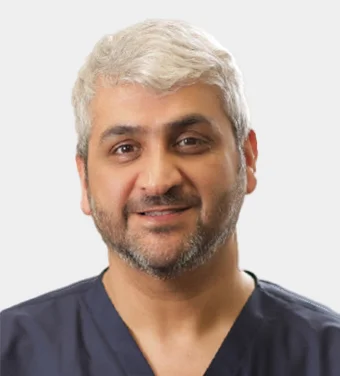_header.webp )
IBS Hospital offers state-of-the-art treatment for olfactory neuroblastoma (esthesioneuroblastoma), utilizing innovative surgical approaches. Our dedicated team focuses on precise tumor removal, patient safety, and providing personalized, compassionate care
What is Olfactory Neuroblastoma (Esthesioneuroblastoma)?
Olfactory Neuroblastoma, also known as esthesioneuroblastoma, is a rare type of brain tumor that originates in the nasal cavity. Although these tumors are generally slow-growing, some can be highly aggressive. They account for only 3 percent of all tumors in the nasal cavity and have a very low incidence rate of 1 in 2.5 million people. Olfactory neuroblastomas can affect individuals of any age, but are more common in those between 50 and 70 years old. These tumors can increase in size, exerting pressure on the brain and eyes, and have the potential to metastasize to other body areas, leading to secondary tumors.
What are the symptoms of Olfactory Neuroblastoma?
The symptoms of Olfactory Neuroblastoma can be similar to those of a common cold, which complicates diagnosis.
Symptoms to be aware of include:
- Heavy nasal discharge
- Stuffy nose
- Nasal passage obstruction or congestion
- Unexplained nosebleeds
- Facial swelling
- Vision problems
- Watery eyes
- Severe headaches
- Enlarged lymph nodes
What are the causes of Olfactory Neuroblastoma?
The underlying cause of Olfactory Neuroblastoma is not known; however, certain factors have been linked to a higher incidence of the disease. These factors include:
Age: The risk is higher in two age groups children between 10 to 20 years old and adults between 50 to 70 years old.Exposure to toxic chemicals and substances.Exposure to wood dust, flour, formaldehyde, and other solvents.Excessive smoking.
Its important to note that while these factors may be associated with a higher risk, they do not definitively cause olfactory neuroblastoma, and the exact cause of this rare cancer remains uncertain.
How is Olfactory Neuroblastoma diagnosed?
The most common modalities used for the diagnosis of Olfactory Neuroblastoma include:
- Magnetic resonance imaging (MRI)
- Computed tomography (CT) scan
- Apart from these, a tissue biopsy may also be performed to further assess the malignancy
How is Olfactory Neuroblastoma treated at IBS Hospital?
Surgery is the gold standard treatment for patients with olfactory neuroblastoma, involving the extraction of the tumor. Doctors typically perform wide local excision and medial maxillectomy, both requiring facial reconstruction.
Our team of experts that make it possible
Meet the team of highly specialised and experienced neurosurgeons, neurologists, orthopedicians, and other experts in the field of neurology and spine care. Our team is dedicated to providing personalised and compassionate care to each patient, with the goal of helping them achieve the best possible outcomes.

Dr. Vikas Gupta
Senior Neurosurgeon

Dr. Dewaker Sharma
Senior Neurosurgeon

Dr. Sachin Kandhari
Senior Neurosurgeon

Dr. Anup Gogoi
Senior Neurosurgeon

Dr. Ankur Dhandha
Anaesthetist

Dr. Gaurav Sharma
Senior Sports Physiotherapist

Dr. Sachin Samuel
Senior Neuro Physiotherapist

Dr Ankush Arora
Anaesthetist

Dr Amarjyoti Yadav
Anaesthetist
IBS Hospital Empowers Your Treatment with Cutting-edge Technology
We continuously incorporate cutting-edge technologies from around the world into our offerings, such as a surgical system that allows for precise and confident complex procedures. We use magnetic stimulation to treat certain neurological conditions and create personalised brain maps for tailored treatment plans. Nerve monitoring during surgeries ensures the nervous system is not compromised, and a robotic exoskeleton aids in mobility issues. Our goal at IBS Hospital is to provide the best care possible, utilising the latest and most innovative technologies available.


